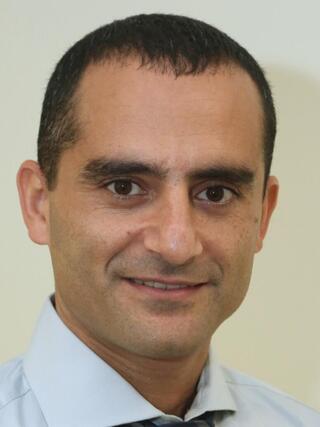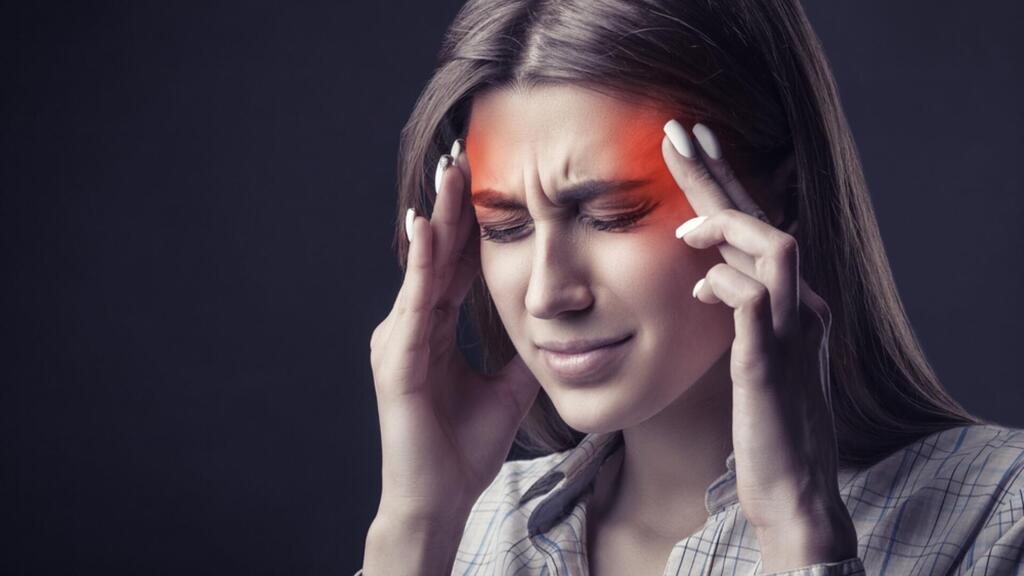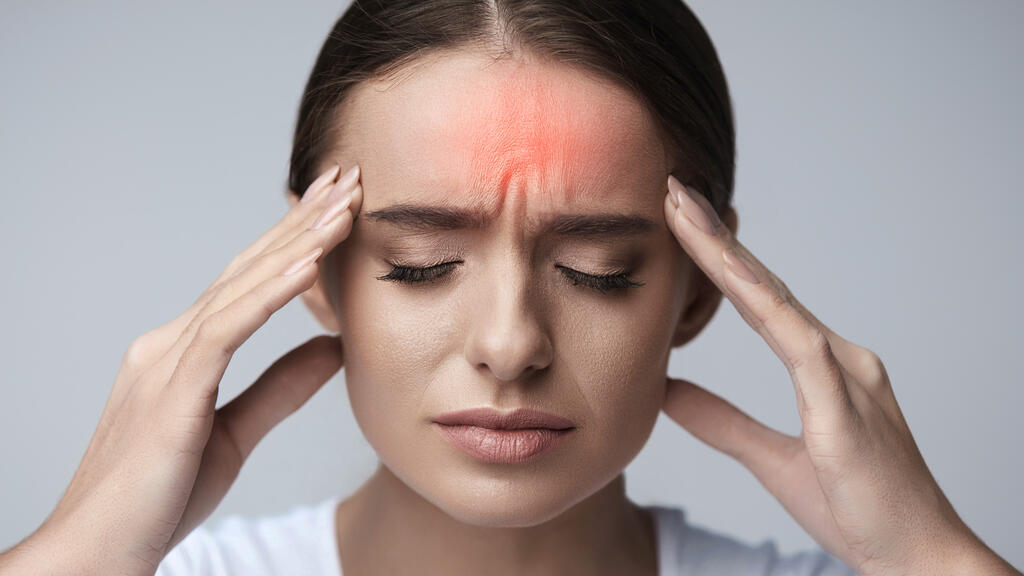Getting your Trinity Audio player ready...
A migraine isn't "just another headache." The World Health Organization (WHO) ranks it as the second most disabling condition among all diseases and the most disabling of all neurological disorders.
Those suffering from chronic migraines can find themselves incapacitated for over half of each month, lying in a dark room until the migraine passes. However, the condition is not an inevitable fate.
A recent medical article highlights how proper treatment can reduce the risk of a migraine getting worse and becoming chronic by two to three times, stressing the importance of appropriate management to prevent deterioration and significant impairment in quality of life.
Additionally, a newly released guideline document from the World Federation of Neurology outlines both established and new treatments, and stresses the importance of early diagnosis and proper treatment of migraines.
Three times more common in women than men
"A typical headache is usually mild. We often hear descriptions like 'a feeling of heaviness in the head,' 'a kind of tightness,' or 'a helmet over the head.' It’s annoying but usually doesn’t interfere with normal, every day functioning. Migraine, on the other hand, is a more 'dramatic' condition, like a storm that comes and goes.
Migraine attacks are usually debilitating, often accompanied by nausea, vomiting and sensitivity to light and noise. During an attack, all a migraine sufferer wants to do is lie in bed in a dark room and avoid seeing or hearing anyone. Migraine affects about 15% of the population and it's estimated that over a million people in Israel suffer from migraines. The condition is three times more common in women than in men.
Migraine primarily affects women in their thirties or forties, a time when they're building their careers and families. The triggers for migraines are often hormonal changes related to the menstrual cycle, mental stress at home or work, lack of sleep, excessive physical exertion and certain foods.
For this reason, about three years ago, neurologists approached Israel’s National Insurance Institute and requested the establishment of a criteria and uniform procedure for recognizing disability due to headaches.
Thanks to this decision, many patients suffering from chronic migraines are now recognized as disabled and may be eligible for benefits if they meet certain criteria. This is a very significant shift in public awareness.
What to do if you think you might suffer from a migraine
Consult a doctor for a definitive migraine diagnosis. Today, we know that very few migraine sufferers receive a proper diagnosis, and even fewer get appropriate treatment. A European study involving 9,000 people with headaches found that 38% were diagnosed with migraines, but only about 3% to 11% of patients received specific migraine medications and only a small percentage received preventive treatment.
In Israel, this issue was discussed in the Knesset's Health Committee six months ago due to its importance, following a comprehensive report by the Knesset's Research and Information Center. The report highlighted the dire situation in Israel when it came to the percentage of diagnosed patients.
Only about 4% are diagnosed with migraines compared to a prevalence of 15% in other countries. This indicates a condition characterized by severe underdiagnosis and undertreatment and we must do everything possible to improve diagnosis and treatment to alleviate patients' suffering and reduce the burden of the disease on the population.
Initially, we recommend that our patients take simple pain relievers such as Paracetamol (Acamol or Tylenol), Optalgin and NSAIDs, and when these don't help or stop being effective, move on to more complex medications containing caffeine and codeine, like Acamol Focus, Exidol, Excedrin and others. When these also fail, we prescribe triptans, which are specific medications for stopping migraine attacks.
Triptans are effective in stopping attacks, but we can’t give them to everyone. For example, they’re contraindicated for people who’ve had a stroke or a heart attack in the past. Further, while these medications may stop the attack, about 30% of patients might develop intolerance (disabling side effects like severe fatigue, chest pressure, etc.) or experience rebound headaches when the medication wears off.
If no improvement is seen, we move on to gepants, a new generation of medications that inhibit a protein called CGRP, involved in the inflammatory process that develops at the nerve endings of the blood vessels in the brain's membranes. This inflammation likely causes the migraine symptoms we're familiar with and blocking the CGRP protein effectively stops the attacks.
CGRP inhibitors have been found to be safe for use, even in patients with a prior medical history and they work efficiently both as a treatment to stop an attack and to prevent future ones, without the risk of side effects or rebound headaches associated with triptans. Additionally, it's important to remember to take the medication to stop the attack as early as possible, ideally within an hour of the onset of the attack.
What preventative treatments are available
Preventive treatment is administered regularly and is intended for patients who suffer from migraines more than three or four days a month. Current preventive treatments can eliminate migraines in about 15% of patients, reduce the number of migraine days by at least 75% in about 30% of patients and decrease the number of migraine days by at least 50% in 40% of patients.
In the past, preventive treatment was based on three families of older medications originally developed for other purposes: high blood pressure, anxiety and depression, and epilepsy. However, these medications can cause unpleasant side effects such as weight gain, hair loss, depression and cognitive issues. Because of this, over 80% of patients stop using these medications within a year.
The introduction of CGRP inhibitors both for stopping and preventing attacks has changed this. These treatments aren’t only more effective than the older ones but are also much safer with almost no side effects. As a result, over 80% of patients continue with CGRP inhibitor preventive treatments for more than a year after starting them.
CGRP inhibitor medications include biological treatments administered via an automatic injector once a month or every three months. Another treatment option is oral medication, where CGRP inhibitors are taken one day, and a different type of medication is taken the next.
Is there a wrong way to treat the condition?
It’s important to remember that overuse of painkillers can cause a different type of headache than a migraine, leading to a situation where a person suffers from two types of headaches. Anyone who takes simple painkillers more than 15 days a month or triptans more than 10 days a month is at risk of developing a headache due to overuse of painkillers.
This happens because the brain gets used to the pain relief and when the painkiller is no longer in the bloodstream, a rebound headache occurs. This leads to a cycle of using more painkillers, causing more headaches which leads to more painkillers, creating an almost certain path to chronic headaches and painkiller addiction, a condition that’s very difficult to treat.
On the other hand, insufficient treatment can also worsen the patient’s condition. Without appropriate treatment to stop attacks and effective preventive treatment, the condition can deteriorate from an attack once a week or every two weeks to several attacks a week or even daily headaches.
 Dr. Oved DanielPhoto: Shmulik Shlish
Dr. Oved DanielPhoto: Shmulik ShlishTherefore, it's crucial for people suffering from migraines to receive the treatment that suits them, both during attacks and as preventive care, to prevent their condition from getting worse. Fortunately, there are new treatments available for migraines today, so it’s important to consult a doctor as early as possible for proper diagnosis and treatment.
- Dr. Oved Daniel is a senior neurologist and the director of the Headache and Facial Pain Clinic at Tel Aviv Sourasky Medical Center.






